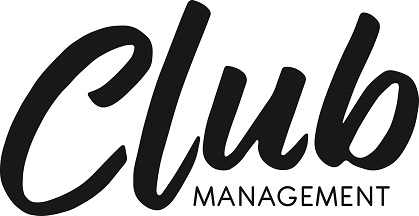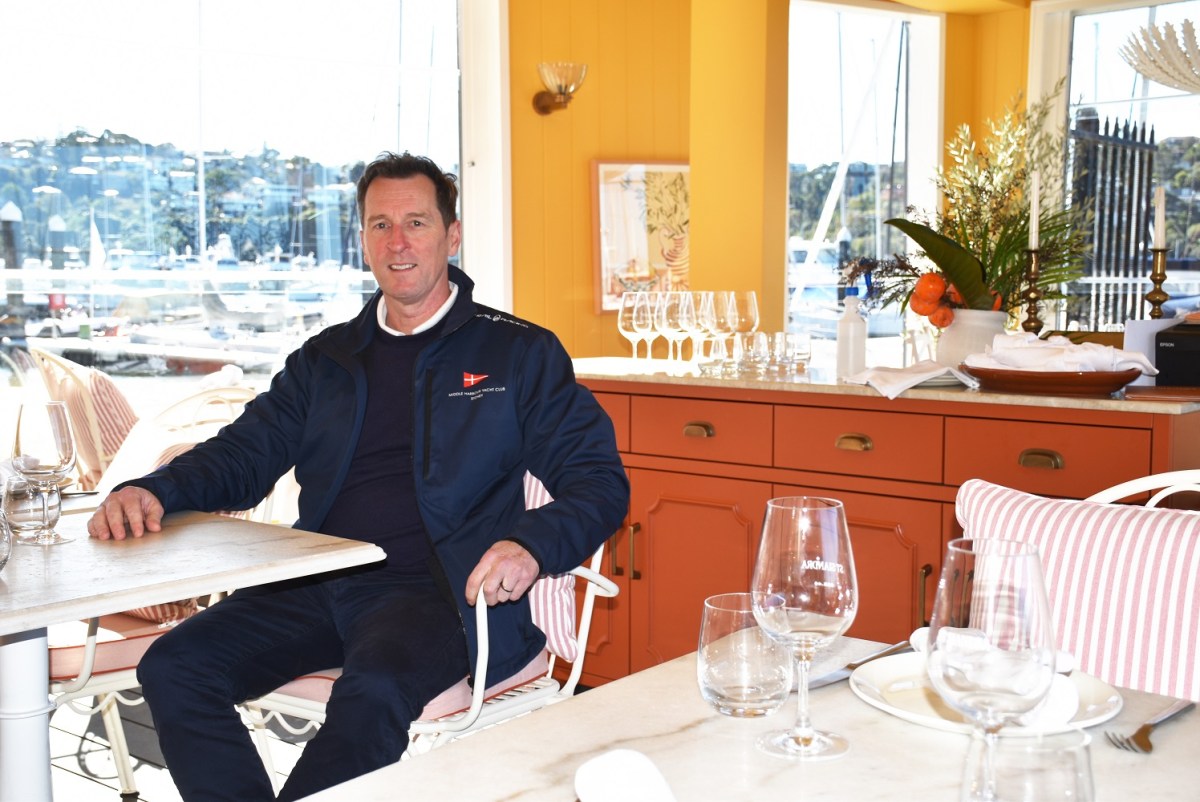By Grant Jones
Middle Harbour Yacht Club in the early 1970s was all dark timbers, silver trophies, musty storerooms and old sea salts. For this writer, the return to the clubhouse after sailing tiny timber Flying Ants on Sydney Harbour offered cold lemonade, maybe some hot chips on the tiny beach for the kids and a beer or wine for the adults. In the ensuing half-century, not much had changed.
Mark Maybury came in as Covid started to hammer the industry. Having worked under the stewardship of Richard Errington, CEO of the then Rooty Hill RSL Club – pre Wests HQ – Maybury knew that change in clubs needs to be an evolution, not a revolution.
“I enjoy clubs and working with the members and the cultural component of it,” he says.
Limited by a 100-berth marina, significant maintenance costs in a “brutal” environment, a tired and costly F&B offering, rusted-on membership, lots of wasted space, compliance costs and sub-lease planning hurdles, much needed doing.
With just four full-time staff, himself included, some part-timers and casuals and an array of elderly volunteers, Maybury decided to maximise the things he could change rather than worry about the things he couldn’t.
While they continue to undertake general maintenance, the ability of elderly volunteers to undertake some of the heavier work is declining. The average age of the 100 or so members is 60-65, with 70 per cent older males. Encouraging female membership with a women-only race series and using an all-female crew or mixed crew with a female skipper on donated boats has gone some way towards arresting the decline in women members. Meanwhile, a junior school holiday program with 300-400 children per year come through, is effectively long daycare with few converting to full membership.
“We can do the junior training but at some point, there has to be a full commitment from the individual and the family and that is time and financial resourcing, boat purchase, then that becomes expensive,” Maybury says. “Those that do come through have a tendency to come from a sailing family.”
Juniors also usually come back when they are 30 or 40 for twilight sailing, but the club needed to look at compacting sailing opportunities that don’t eat into too much of a weekend.
“The problem with sailing, like golf, is also that time constraint. We are finding that it is getting a bit more difficult for our weekend sailing to get crew. Race fleets on weekends are also declining,” he says. “It’s happening all over the place. We all have the same issues. The same with volunteers. They are all ageing … and some of those boat owners are getting older too and they are not as active or as competitive as they used to be.”
A sea change needed to happen. While his expertise is not sailing, it still is the core of Middle Harbour Yacht Club and needed to be addressed.
“How can we change the program to make it more attractive to people who have time constraints?” he asks. “Is it a shorter series or not racing every weekend or racing on Saturday or Sunday in a shorter format? We are just playing around with that at the moment because we see what we need to make an adjustment to that.”
While partnership in boat ownership and growth in cruising and leisure sailing means people want to come back to the club for a drink and a bite, competition numbers are dwindling.
“All the drop-off in race fleets has a knock-on effect to other parts of our club, particularly our on-land components hence why we’ve had to make some adjustments to our food and beverage,” he says.
A new dining prospect
Sailing also only takes place 120 days a year,and there were only a few days when the club was full outside of twilight sailing.
“Then you have 300 people coming off a boat who want to be fed and watered. But that is only 22 times a year,” he says. The in-house catering was also losing money “hand over fist”.
“The revenue levers that we could pull are very limited and our membership has remained pretty static,” Maybury says. “What was key for me and what I looked at was about bringing traffic and life down here and things that would complement our other services.”
During Covid, locals approached the club looking for small office spaces but that wasn’t the right fit.
“Bringing tenants in had to bring a value back to the club in one form, value back to members or second revenue or like activity,” he says. “When we looked at putting partners in here, we looked at what else did they bring [to the club and its members].”
Presenting new ideas and concepts to members was also key in getting ideas over the line.
“Their main thing was how do we take the members through it,” Maybury says of older members who considered the club “their” space. That included an idle former boat brokerage office and junior sailing school, that covered a hidden gem.
“I was standing at the junior sailing office one day looking out the window, looking at The Spit and it was winter and the sun was streaming in. I thought, ‘This is great. If we open this…’.”
So artists’ impressions and an initial concept got members excited. While a fundraising effort was set at $200,000, the gutting of the space and some structural work cost about $350,000. So it would take a lot more to create a quality restaurant.
“It needed to go that next step of having a full kitchen so we tried to raise funds through our foundation,” he says, but the club just couldn’t raise enough and didn’t have the expertise.
“I went back to the board and they all wanted a better restaurant and I said unless you can give me the money we need to look at some more alternatives.”
Maybury proposed putting the venue out to tender on a separate lease, separate title with a liquor licence. The club then asked a local commercial real estate agent who had a queue of people looking for waterside venues. Among them were hospitality duo, chefs-turned-restaurateurs Mitchell Davis and Gavin Gray of Great Eats, the successful catering consultancy behind Bondi Icebergs Club.
“I went ‘Bingo’. This is perfect,” says Maybury. “It was the same vision we had. We aligned and we’ve ended up doing a straight lease with them,” he says.
St Siandra was born. The club then struck a deal to lease the function space above the restaurant. While St Siandra is open to the general public, the operators also offer a tighter menu to the members next door.
“The more successful they are, the more successful we will be,” Maybury says.
F&B is now cash positive. Over the past year, commercial revenue has also increased by 82 per cent. While building issues delayed the opening of St Siandra, things are expected to heat up this summer with forward bookings looking promising. New social members have also signed up.
“It’s brought a lot of life around here,” Maybury says. “It’s a different audience. There is a whole new clientele down here.”
This is an extract from a feature in the Spring issue of Club Management. Keep reading below.

